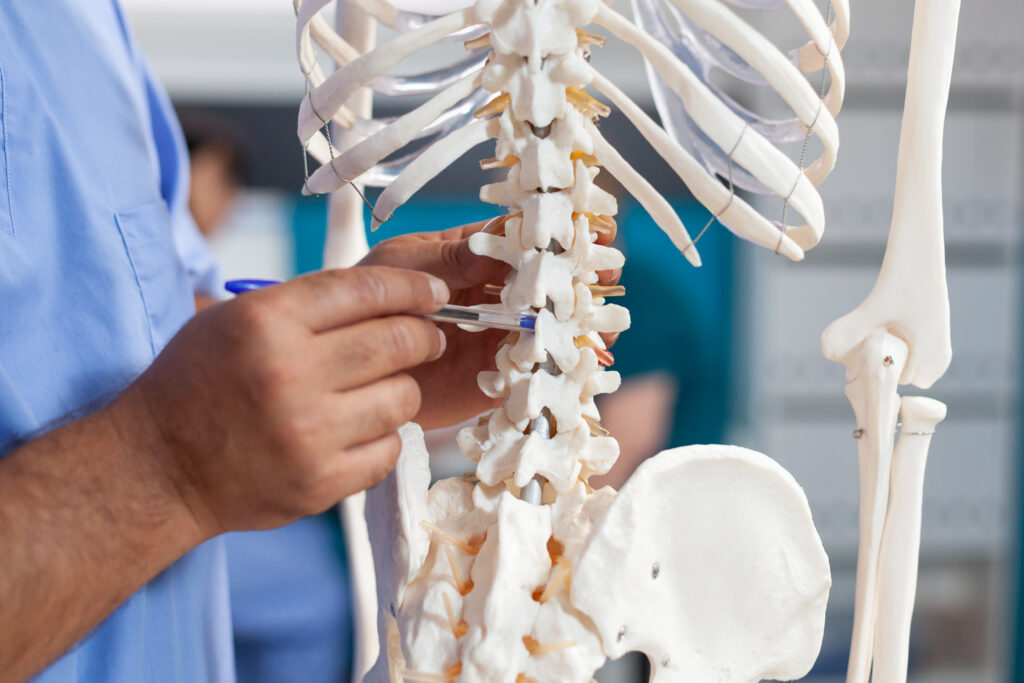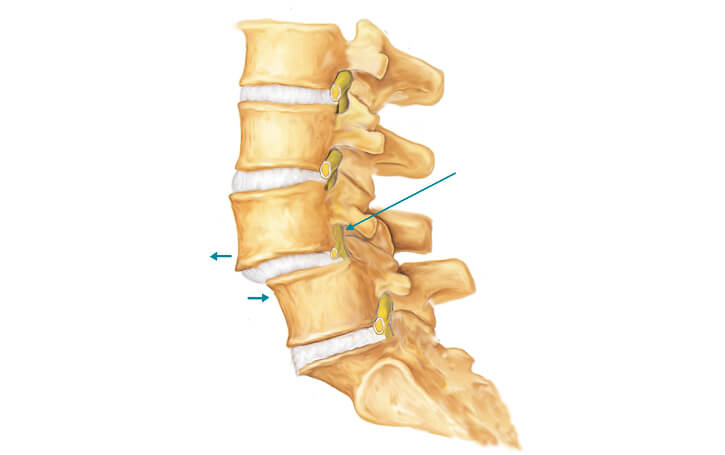Spondylolisthesis Treatment

Introduction
The human spine consists of 33 vertebrae. Sometimes, one of these vertebrae moves out of its position and moves on top of the vertebra next to it. More often than not, it happens at the base of your spine. When this displaced bone puts pressure on a spinal nerve, it can lead to pain and discomfort in the lower back and hind legs. This pain worsens when you move around. Standing or sitting in one spot for long periods can aggravate spondylolisthesis pain.
People above the age of 50, females, athletes, and those with a family history of spondylolisthesis are more predisposed to this condition. It can be diagnosed through imaging tests and physical exams.

Symptoms
A variety of symptoms that might affect everyday activities and general mobility are frequently present in spondylolisthesis patients.
- Discomfort in the lower back worsens with movement or standing for a long time.
- Pain that resembles sciatica and radiates to the legs or buttocks.
- The hamstrings are tight or stiff.
- Soreness or muscle spasms in the lower back.
- Difficulty keeping a straight posture or walking.
- Leg weakness, tingling, or numbness if nerves are squeezed.
- Lack of bowel or bladder control under a medical emergency.
Causes
Spondylolisthesis can develop due to various reasons, often related to spinal structure and stability.
- Age-related wear and tear causes weakening of joints and ligaments.
- Congenital defects that manifest as abnormal spinal formation.
- Fractures or trauma leading to vertebrae slipping out of place.
- Activities like gymnastics, weightlifting, etc that put stress on the lower spine.
- Instability in the spinal joints caused by arthritis.
- Family history of spinal conditions.
- Complications due to previous spine surgery.
Diagnosis and Treatment
Effective treatment of spondylolisthesis requires a precise diagnosis and suitable treatment.
- Imaging studies such as X-rays, MRIs, or CT scans are used to evaluate spinal alignment and nerve compression after a comprehensive physical examination to check for pain, mobility, and nerve function.
- Physical therapy to strengthen the core and stabilize the spine is part of the first management, which also involves pain reduction using muscle relaxants and anti-inflammatory drugs.
- In more serious situations, support may be provided via a back brace. To repair vertebral slippage and relieve nerve pressure, surgical alternatives such as spinal fusion or decompression may be suggested if conservative therapies are unsuccessful.
Risk Factors
Certain factors can increase the likelihood of developing spondylolisthesis.
- Age-related spinal degeneration, especially in individuals over 50.
- Playing activities like football or gymnastics that require the spine to be hyperextended.
- Spinal diseases in the family history.
- Diseases that weaken bones, such as osteoporosis.
- Being overweight puts additional strain on the lower back.
- Weak core muscles as a result of a sedentary lifestyle.
- Prior fractures or damage to the spine.
